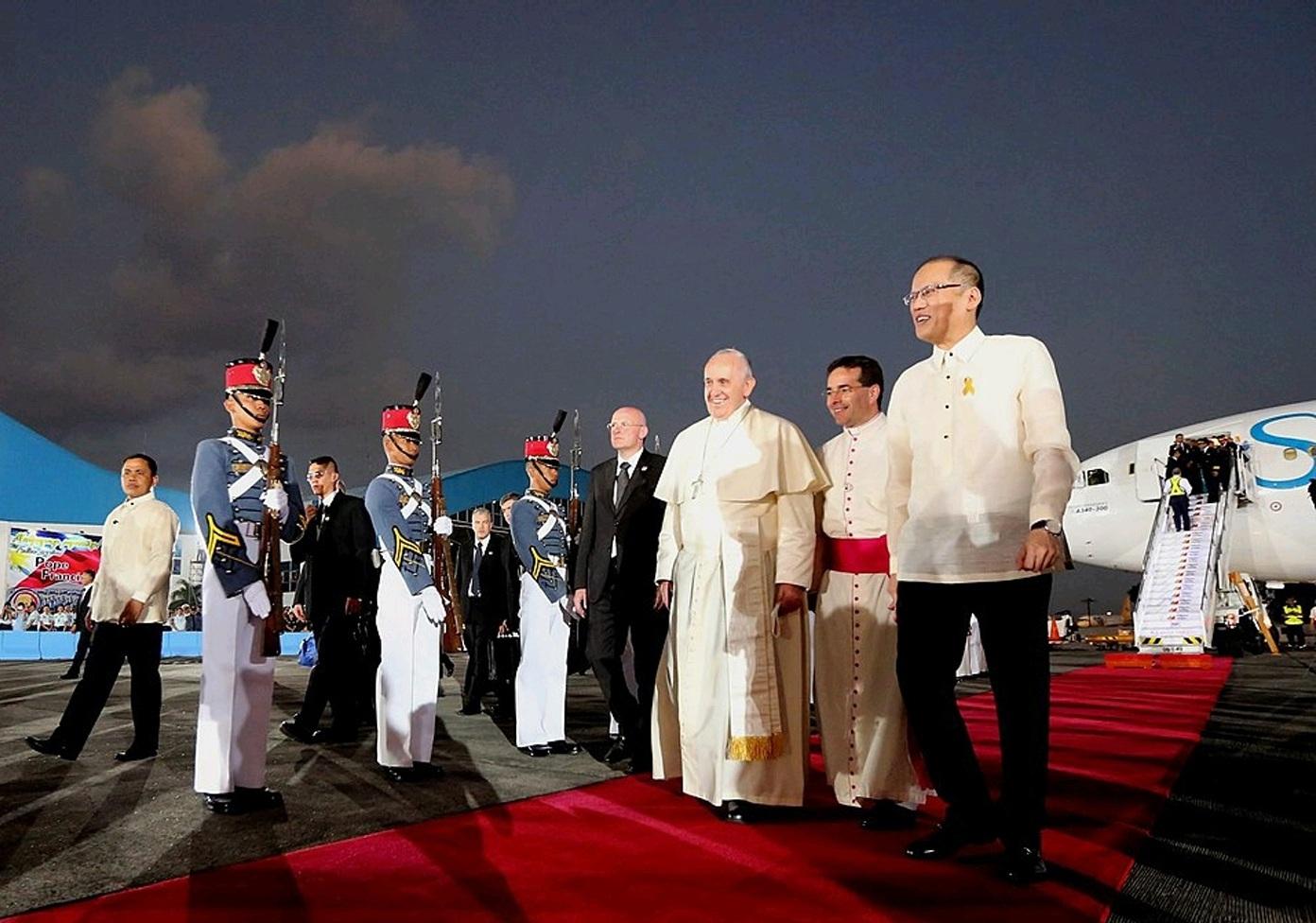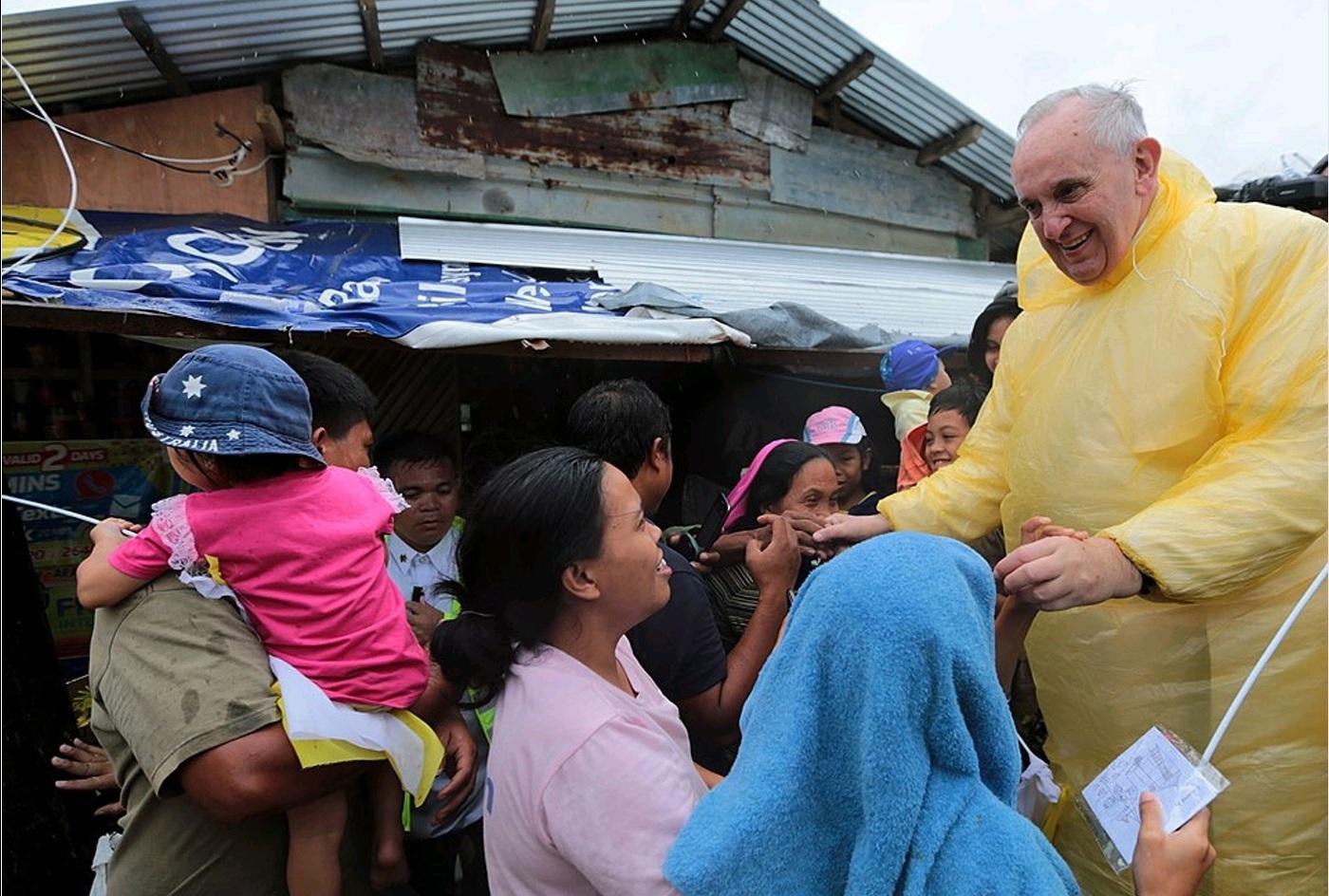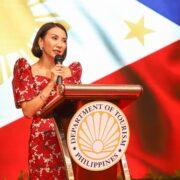The People’s Pope, Pope Francis, visited Typhoon Yolanda survivors in Palo, Leyte on January 17, 2015. Photo by Benhur Arcayan / Malacañang Photo Bureau
Pope Francis has died at 88. As the first Latin American pope, he led with humility, reformed the Church, and championed justice and compassion for the poor.
VATICAN CITY – Pope Francis, the 266th leader of the Roman Catholic Church and a transformative figure in modern religious life, passed away on Easter Monday, April 21, 2025, at the age of 88. The first Latin American pope and the first Jesuit to hold the papacy, he died peacefully at his Vatican residence, Casa Santa Marta, after a prolonged battle with pneumonia.
His passing marks the end of an era defined by humility, inclusivity, and a deep concern for the marginalized.
From Buenos Aires to the Papacy
Born Jorge Mario Bergoglio on December 17, 1936, in Buenos Aires, Argentina, Pope Francis was the son of Italian immigrants. Before his priestly vocation, he trained as a chemist.
He joined the Society of Jesus (Jesuits) in 1958, was ordained in 1969, and served as Provincial Superior of the Jesuits in Argentina, then Archbishop of Buenos Aires, and later became a cardinal in 2001.
He was elected pope on March 13, 2013, following the resignation of Pope Benedict XVI—becoming the first pope from the Americas and the first non-European in over a millennium. He chose the name Francis in honor of St. Francis of Assisi, known for his devotion to peace, poverty, and care for creation.

Photo by Robert Viñas / Malacañang Photo Bureau
The Papacy of Pope Francis
Pope Francis’s tenure was defined by sweeping changes in tone and emphasis within the Catholic Church. He called for a Church of inclusion rather than condemnation, repeatedly urging Catholics to focus on mercy over judgment.
In a widely quoted 2013 interview, Francis described his vision of the Church:
“I see the Church as a field hospital after battle. It is useless to ask a seriously injured person if he has high cholesterol… You have to heal his wounds. Then we can talk about everything else.”
His 2015 encyclical, Laudato Si’, positioned environmental protection as a moral and spiritual imperative, earning praise from both faith leaders and scientists. He also championed the rights of migrants, the poor, and the socially excluded.
Known as “The People’s Pope,” Francis favored simple living, refused the papal palace, and rode in modest cars. He touched millions with his direct, down-to-earth approach and willingness to address difficult global issues.
Illness and Final Days
In early 2025, Pope Francis was hospitalized for double pneumonia, leading to a 38-day hospital stay, the longest of his papacy. Despite his frailty, he made one final public appearance during Easter Sunday Mass on April 20, blessing thousands gathered in St. Peter’s Square.
He died quietly the following morning, surrounded by members of his household and medical staff.
A World in Mourning
Pope Francis’s death prompted a global outpouring of grief and tributes:
U.S. Vice President J.D. Vance, who met him just a day before his death, called him “a shepherd to the world and a conscience for our time.”
European Commission President Ursula von der Leyen said he “inspired millions, far beyond the Catholic Church, with his humility and love so pure for the less fortunate.”
Indian Prime Minister Narendra Modi praised him as “a beacon of compassion, humility, and spiritual courage.”
Philippine President Ferdinand Marcos Jr. honored the pontiff as “a man of profound faith and humility” who led the Church “with wisdom and a heart open to all, especially the poor and the forgotten.” Marcos added, “As we mourn his passing, we honor a life that brought hope and compassion to so many, and inspired us to love one another as Christ loved us.”
In the Philippines, the largest Catholic nation in Asia, cathedrals filled with faithful for memorial Masses, recalling the pope’s beloved 2015 visit and his support for Filipino overseas workers.
In Argentina, the government declared three days of national mourning, and churches held vigils.
Funeral and Succession
The Vatican announced that Pope Francis will be buried at Basilica of Santa Maria Maggiore, where he often prayed before apostolic journeys. His funeral will take place in St. Peter’s Square later this week, expected to draw global dignitaries and millions of faithful.
The College of Cardinals will convene in early May for the conclave to elect a new pope. Observers expect growing influence from cardinals from Africa, Asia, and Latin America—regions where Francis’s message of justice and inclusion resonated deeply.
A Legacy of Compassion and Courage
Pope Francis leaves behind a Church more open to dialogue, less defined by hierarchy, and deeply engaged with the world’s wounds. He reminded Catholics that leadership begins with listening and that the Gospel calls for solidarity with the most vulnerable.
“The thing the Church needs most today is the ability to heal wounds and to warm the hearts of the faithful,” he once said. “It needs nearness, proximity.”
His life—marked by simplicity, sincerity, and service—touched people of all faiths. And while his voice is now silent, his message of mercy endures.
Related: The Man Who Could Be Pope: Cardinal Luis Antonio Tagle and the Future of the Catholic Church
Related: ‘Conclave’ Wins Best Adapted Screenplay at the Oscars but Falls Short of Best Picture







